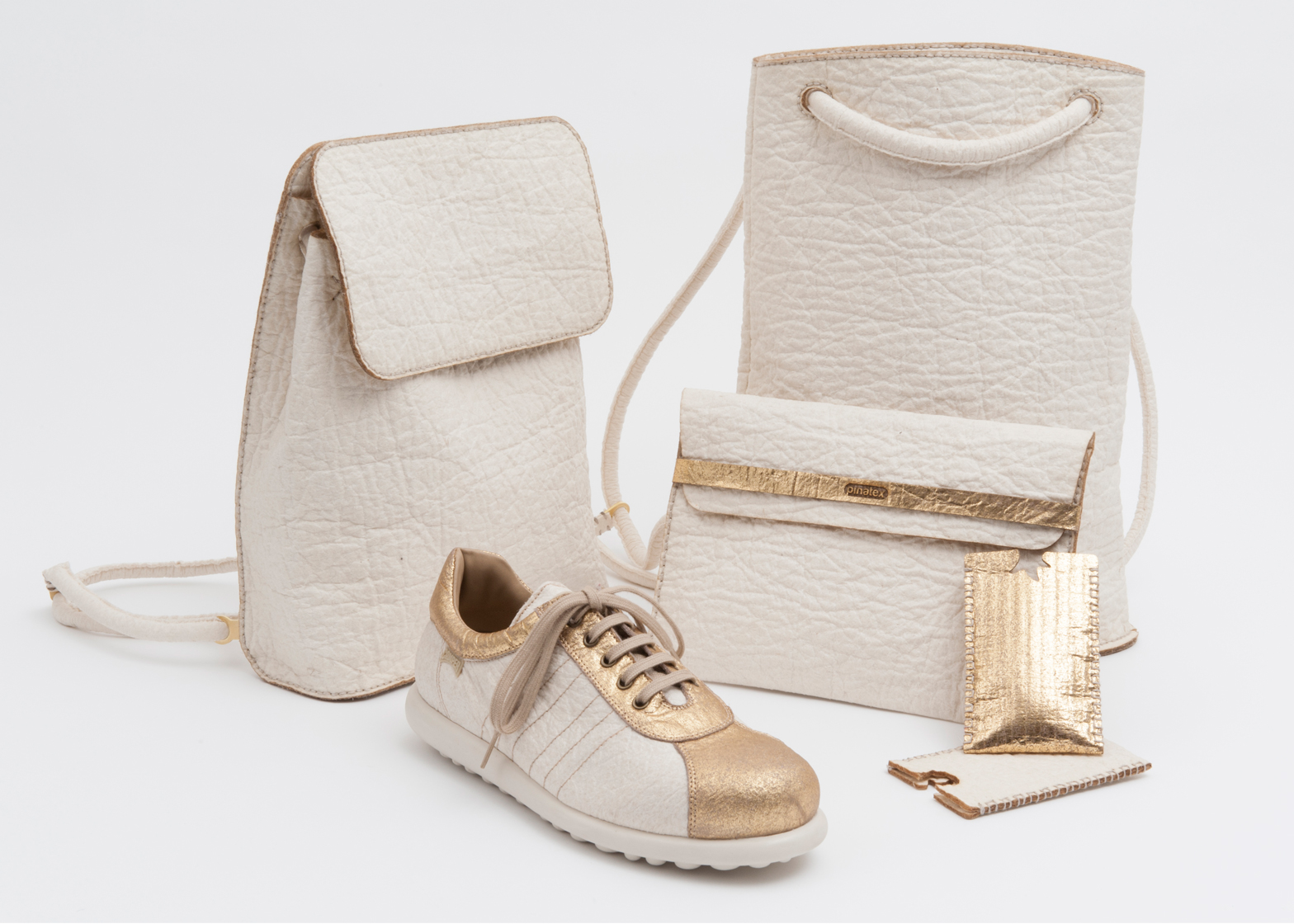Materials company Ananas Anam has developed Piñatex, an animal-friendly alternative to leather made from pineapple waste.
The material uses fine cellulose fibres extracted from pineapple leaves – which are considered an agricultural by-product that is often burned or left to rot. An estimated 40,000 tonnes of this pineapple waste is generated globally each year.
Piñatex utilises waste taken from pineapple plantations in the Philippines, with local factories separating the strands and felting them together into a non-woven fabric that can be used for clothes, footwear or furniture.
Around 480 leaves go into the creation of a single square metre of Piñatex, which weighs and costs less than a comparable amount of leather.
The fabric is breathable and flexible, and can be printed on and stitched. It's also available to purchase on a roll, avoiding the wastage caused by irregularly shaped leather hides.
Currently the material includes a non-biodegradable protective top layer for durability, although the company is working towards a natural alternative that would make the fabric fully biodegradable.
Piñatex was developed by designer Carmen Hijosa, who has spent the last 15 years working in the leather goods industry.
While researching alternatives to leather in the Philippines, Hijosa discovered the possibilities of pineapple fibre and partnered with local weavers to experiment with transforming it into a mesh.
Hijosa showed prototypes by shoe brand Camper and fashion brand Ally Capellino in 2014 as part of a PhD graduate exhibition at the Royal College of Art. She was the recipient of the Arts Foundation's 2016 Award for Materials Innovation.
MIT researchers have recently designed an alternative to another of the fashion industry's favourites, creating 3D-printed artificial fur.
Other designers have experimented with everything from mushrooms to red algae powder in the search for more sustainable materials.
Photographs are courtesy of Ananas Anam.

